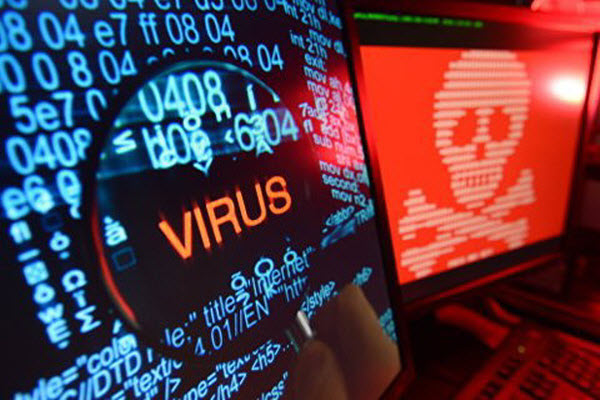While our physical world is plagued by numerous harmful viruses spreading epidemically and causing various diseases, the virtual world represented by information networks and computer systems also harbors its own set of destructive viruses. These viruses can inflict severe damage on technological sectors worldwide and result in significant economic losses. With the recent technological advancements, there has been a qualitative evolution in electronic viruses, fueled by intense competition among hackers to create malicious software designed to cause harm or induce random chaos. Previously, hackers operated as amateurs from their homes, but now they are often part of organized criminal networks or work directly for foreign governments or intelligence agencies. In this article, we explore the ten most dangerous computer viruses that have swept across the globe in the new millennium, causing significant technological and economic issues.

Stuxnet (2009-2010)
Stuxnet is renowned as the first computer virus designed specifically to cause real-world damage, unlike previous viruses that might lead to limited physical losses. Stuxnet uniquely targeted industrial control systems, resulting in substantial damage. This virus was used to destroy equipment at the Iranian uranium enrichment facility in Natanz. According to available information, including data from the International Atomic Energy Agency, experts believe that Stuxnet caused many Iranian centrifuges to malfunction and self-destruct. Although discovered in 2010, it is believed to have first infected computers in Iran in 2009.
Conficker (2009)
In 2009, a new worm virus named Conficker spread to millions of Windows computers worldwide. This resulted in a massive botnet that could be remotely controlled, enabling the theft of personal and financial data, among other information. Due to its complexity, Conficker was difficult to stop, leading to the formation of a coalition of antivirus experts who sought to eradicate its spread. They dubbed it the “superbug” or “super worm.” The true mystery surrounding Conficker is that no one knows its intended purpose, as it has not been used for any known malicious activities. This ambiguity continues to puzzle security experts.
Agent.btz (2008)
The Agent.btz virus is one of the most dangerous due to its impact on the U.S. Department of Defense (Pentagon), which temporarily banned the use of flash drives within its facilities. It also contributed to the creation of a new military division, the U.S. Cyber Command. This virus spread via infected flash drives by installing malicious software to steal data. When discovered in Pentagon computers in 2008, officials suspected espionage. Former Deputy Secretary of Defense William Lynn noted that the virus created a digital bridge capable of transferring data from Defense Department servers to potentially foreign-controlled servers. Although some antivirus experts contested claims that it was created by an intelligence agency, its impact made cyber warfare an official part of U.S. military strategy.

Zeus (2007)
Among the many viruses targeting personal information, Zeus stands out as one of the most infamous and widely used by cybercriminals. Easily available for sale in the cybercrime world, Zeus is employed to steal passwords, files, and personal data, facilitating a black market for purchasing or selling stolen information. In the age of online banking and commerce, compromised identities involve more than just names and Social Security numbers; they include addresses, birthdates, hobbies, preferences, and even secret security questions.
PoisonIvy (2005)
PoisonIvy is a nightmare for computer security, allowing attackers to remotely control the infected machine. Known as a “remote access Trojan,” it provides complete control through vulnerabilities. Once installed, the attacker can activate various controls, such as using the victim’s microphone or webcam to record audio and video. Previously used by amateur hackers and in sophisticated attacks against dozens of Western companies, including those in defense and chemical industries, PoisonIvy is reported by Symantec to have been used in attacks originating from China.
MyDoom (2004)
The MyDoom virus entered the malware scene in 2004, rapidly infecting around one million computers and launching a large-scale attack to disrupt server services by flooding them with information from multiple systems. The virus spread via email as a message, and upon being opened by the victim, a malicious code was unleashed to steal the victim’s address book and send messages to contacts, spreading the virus further. MyDoom is considered the most widespread virus ever, surpassing any other worm.
Fizzer (2003)
By 2003, many viruses and worms spread via email, but Fizzer was unique. Unlike previous viruses like Code Red, which aimed to harm computers and software, Fizzer was primarily focused on financial gain. Although it wasn’t as fast as Code Red, Fizzer was more cunning. According to Roel Schouwenberg of Kaspersky Labs, Fizzer was the first worm created for financial profit, as infected computers began sending spam emails containing pornographic and advertising materials. Fizzer’s success led to the creation of similar viruses, such as the “Sober” worm, prompting Microsoft to offer a $250,000 reward for information leading to its creator’s capture.

Slammer (2003)
In January 2003, the Slammer virus demonstrated how rapidly a computer virus could spread and disrupt both private and public services. Slammer worked by unleashing a flood of data packets across the internet, causing many servers to become nearly paralyzed. The virus had a real impact on major services, including ATMs belonging to Bank of America and the 911 emergency response system in Washington state. Perhaps most alarmingly, it affected a nuclear facility in Ohio.
Code Red (2001)
Compared to modern malware, Code Red may seem relatively benign, but in 2001, it shocked security experts by exploiting a vulnerability in Microsoft’s IIS web server. This allowed the worm to deface and remove websites from the internet. Notably, Code Red managed to take down the White House website and temporarily forced other government agencies to remove their web pages. Despite being overshadowed by later viruses, Code Red is remembered by antivirus experts as a turning point in the history of malware due to its rapid spread.
I Love You (2000)
In 2000, millions of people made the mistake of opening an email attachment with the seemingly innocent title “I Love You.” Instead of revealing a secret admirer’s confession, the file launched a harmful program that overwrote users’ image files and then spread itself via email to the first 50 contacts in the user’s Windows address book. According to today’s standards, this virus was unique and, despite its peculiarity, caused widespread issues for computer users. It took only hours for this virus to become a global epidemic, partly due to its exploitation of a fundamental human emotion— the desire to be loved—making it one of the first socially engineered computer viruses.
